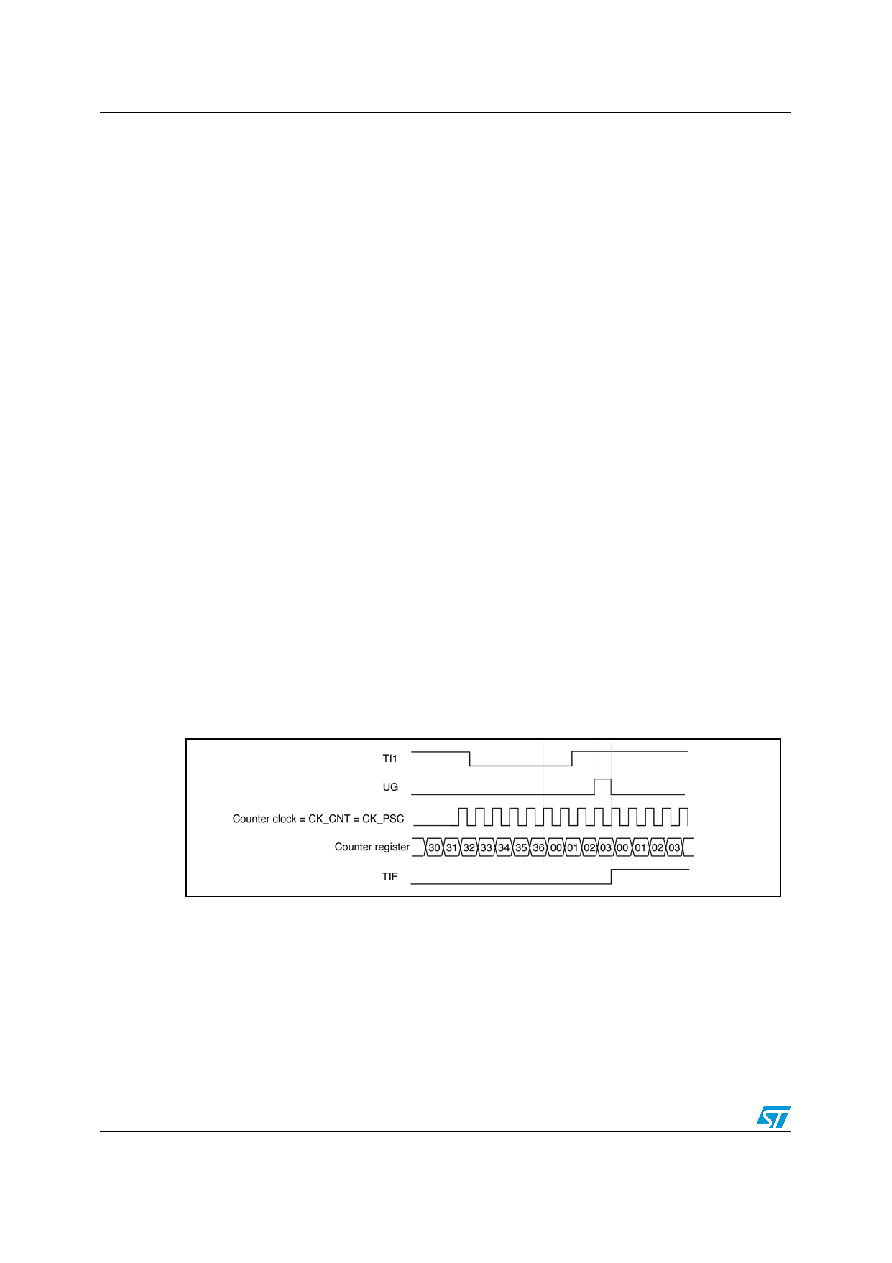- 您現(xiàn)在的位置:買(mǎi)賣(mài)IC網(wǎng) > PDF目錄25648 > STM32W108HBU7 (STMICROELECTRONICS) SPECIALTY MICROPROCESSOR CIRCUIT, QCC40 PDF資料下載
參數(shù)資料
| 型號(hào): | STM32W108HBU7 |
| 廠商: | STMICROELECTRONICS |
| 元件分類(lèi): | 微控制器/微處理器 |
| 英文描述: | SPECIALTY MICROPROCESSOR CIRCUIT, QCC40 |
| 封裝: | 6 X 6 MM, 0.50 MM PITCH, ROHS COMPLIANT, VFQFPN-40 |
| 文件頁(yè)數(shù): | 27/198頁(yè) |
| 文件大?。?/td> | 2871K |
| 代理商: | STM32W108HBU7 |
第1頁(yè)第2頁(yè)第3頁(yè)第4頁(yè)第5頁(yè)第6頁(yè)第7頁(yè)第8頁(yè)第9頁(yè)第10頁(yè)第11頁(yè)第12頁(yè)第13頁(yè)第14頁(yè)第15頁(yè)第16頁(yè)第17頁(yè)第18頁(yè)第19頁(yè)第20頁(yè)第21頁(yè)第22頁(yè)第23頁(yè)第24頁(yè)第25頁(yè)第26頁(yè)當(dāng)前第27頁(yè)第28頁(yè)第29頁(yè)第30頁(yè)第31頁(yè)第32頁(yè)第33頁(yè)第34頁(yè)第35頁(yè)第36頁(yè)第37頁(yè)第38頁(yè)第39頁(yè)第40頁(yè)第41頁(yè)第42頁(yè)第43頁(yè)第44頁(yè)第45頁(yè)第46頁(yè)第47頁(yè)第48頁(yè)第49頁(yè)第50頁(yè)第51頁(yè)第52頁(yè)第53頁(yè)第54頁(yè)第55頁(yè)第56頁(yè)第57頁(yè)第58頁(yè)第59頁(yè)第60頁(yè)第61頁(yè)第62頁(yè)第63頁(yè)第64頁(yè)第65頁(yè)第66頁(yè)第67頁(yè)第68頁(yè)第69頁(yè)第70頁(yè)第71頁(yè)第72頁(yè)第73頁(yè)第74頁(yè)第75頁(yè)第76頁(yè)第77頁(yè)第78頁(yè)第79頁(yè)第80頁(yè)第81頁(yè)第82頁(yè)第83頁(yè)第84頁(yè)第85頁(yè)第86頁(yè)第87頁(yè)第88頁(yè)第89頁(yè)第90頁(yè)第91頁(yè)第92頁(yè)第93頁(yè)第94頁(yè)第95頁(yè)第96頁(yè)第97頁(yè)第98頁(yè)第99頁(yè)第100頁(yè)第101頁(yè)第102頁(yè)第103頁(yè)第104頁(yè)第105頁(yè)第106頁(yè)第107頁(yè)第108頁(yè)第109頁(yè)第110頁(yè)第111頁(yè)第112頁(yè)第113頁(yè)第114頁(yè)第115頁(yè)第116頁(yè)第117頁(yè)第118頁(yè)第119頁(yè)第120頁(yè)第121頁(yè)第122頁(yè)第123頁(yè)第124頁(yè)第125頁(yè)第126頁(yè)第127頁(yè)第128頁(yè)第129頁(yè)第130頁(yè)第131頁(yè)第132頁(yè)第133頁(yè)第134頁(yè)第135頁(yè)第136頁(yè)第137頁(yè)第138頁(yè)第139頁(yè)第140頁(yè)第141頁(yè)第142頁(yè)第143頁(yè)第144頁(yè)第145頁(yè)第146頁(yè)第147頁(yè)第148頁(yè)第149頁(yè)第150頁(yè)第151頁(yè)第152頁(yè)第153頁(yè)第154頁(yè)第155頁(yè)第156頁(yè)第157頁(yè)第158頁(yè)第159頁(yè)第160頁(yè)第161頁(yè)第162頁(yè)第163頁(yè)第164頁(yè)第165頁(yè)第166頁(yè)第167頁(yè)第168頁(yè)第169頁(yè)第170頁(yè)第171頁(yè)第172頁(yè)第173頁(yè)第174頁(yè)第175頁(yè)第176頁(yè)第177頁(yè)第178頁(yè)第179頁(yè)第180頁(yè)第181頁(yè)第182頁(yè)第183頁(yè)第184頁(yè)第185頁(yè)第186頁(yè)第187頁(yè)第188頁(yè)第189頁(yè)第190頁(yè)第191頁(yè)第192頁(yè)第193頁(yè)第194頁(yè)第195頁(yè)第196頁(yè)第197頁(yè)第198頁(yè)

General-purpose timers
STM32W108CB, STM32W108HB
122/198
Doc ID 16252 Rev 3
10.1.13
Timers and external trigger synchronization
The timers can be synchronized with an external trigger in several modes: reset mode,
gated mode, and trigger mode.
Slave mode: reset mode
Reset mode reinitializes the counter and its prescaler in response to an event on a trigger
input. Moreover, if the TIM_URS bit in the TIMx_CR1 register is low, an update event is
generated. Then all the buffered registers (TIMx_ARR, TIMx_CCRy) are updated.
In the following example, the up-counter is cleared in response to a rising edge on the TI1
input:
●
Configure the channel 1 to detect rising edges on TI1: Configure the input filter
duration. In this example, no filter is required so TIM_IC1F = 0000. The capture
prescaler is not used for triggering, so it is not configured. The TIM_CC1S bits select
the input capture source only, TIM_CC1S = 01 in the TIMx_CCMR1 register. Write
TIM_CC1P = 0 in the TIMx_CCER register to validate the polarity, and detect rising
edges only.
●
Configure the timer in reset mode by writing TIM_SMS = 100 in the TIMx_SMCR
register. Select TI1 as the input source by writing TIM_TS = 101 in the TIMx_SMCR
register.
●
Start the counter by writing TIM_CEN = 1 in the TIMx_CR1 register.
The counter starts counting on the internal clock, then behaves normally until the TI1 rising
edge. When TI1 rises, the counter is cleared and restarts from 0. In the meantime, the
trigger flag is set (the INT_TIMTIF bit in the INT_TIMxFLAG register) and an interrupt
request can be sent if enabled (depending on the INT_TIMTIF bit in the INT_TIMxCFG
register).
Figure 40 shows this behavior when the auto-reload register TIMx_ARR = 0x36. The delay
between the rising edge on TI1 and the actual reset of the counter is due to the
resynchronization circuit on the TI1 input.
Figure 40.
Control circuit in reset mode
Slave mode: gated mode
In gated mode the counter is enabled depending on the level of a selected input.
In the following example, the up-counter counts only when the TI1 input is low:
●
Configure channel 1 to detect low levels on TI1 Configure the input filter duration. In
this example, no filter is required, so TIM_IC1F = 0000. The capture prescaler is not
used for triggering, so it is not configured. The TIM_CC1S bits select the input capture
source only, TIM_CC1S = 01 in the TIMx_CCMR1 register. Write TIM_CC1P = 1 in the
TIMx_CCER register to validate the polarity (and detect low level only).
相關(guān)PDF資料 |
PDF描述 |
|---|---|
| STP506C-2IW-012V | SINGLE COLOR DISPLAY CLUSTER, WHITE, 152.4 mm |
| SUGR47M | DUAL COLOR LED, RED/GREEN, 5 mm |
| SUR76D | SINGLE COLOR LED, RED, 3 mm |
| SUY17D | SINGLE COLOR LED, YELLOW, 3.9 mm |
| SY405T | SINGLE COLOR LED, AMBER, 2.7 mm |
相關(guān)代理商/技術(shù)參數(shù) |
參數(shù)描述 |
|---|---|
| STM32WC-RFCKIT | 功能描述:Zigbee/802.15.4開(kāi)發(fā)工具 STM32W Low-Cost RF STM32F103 MCU Kit RoHS:否 制造商:Silicon Labs 產(chǎn)品:Development Kits 工具用于評(píng)估:EM35x 頻率:2.4 GHz 接口類(lèi)型:USB 工作電源電壓: |
| STM32W-RFCKIT | 功能描述:開(kāi)發(fā)板和工具包 - 無(wú)線 STM32W RF CNTRL KIT STM32F103 USB JTAG RoHS:否 制造商:Arduino 產(chǎn)品:Evaluation Boards 工具用于評(píng)估:AT32UC3L 核心:AVR32 頻率: 接口類(lèi)型:USB 工作電源電壓:5 V |
| STM3-3 | 制造商:RINO MECH.(GENGARELL 功能描述: |
| STM330 | 制造商:EnOcean GmbH 功能描述:Temperature energy harvester, 868MHz |
| STM330U | 制造商:EnOcean GmbH 功能描述:Temperature energy harvester, 315MHz 制造商:EnOcean GmbH 功能描述:Temperature energy harvester, 902MHz |
發(fā)布緊急采購(gòu),3分鐘左右您將得到回復(fù)。